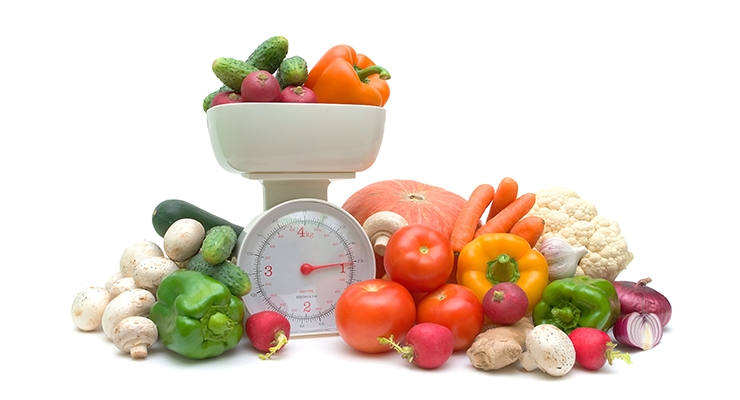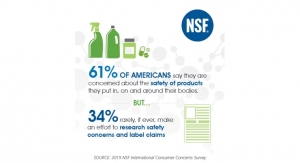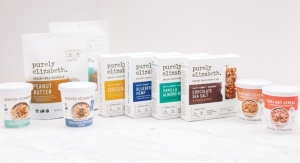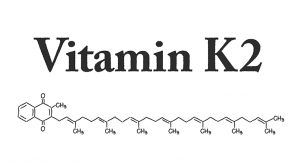By Simon Sum, DCN, RDN, ACSM-CPT, FAND, Senior Manager of Global Product Science & Safety, R&D, Herbalife Nutrition06.19.19
Current scientific evidence shows that healthy eating patterns and regular physical activity can help people achieve and maintain good health and reduce the risk of chronic disease. The 2015-2020 Dietary Guidelines for Americans reflects this evidence through its recommendations and emphasizes the importance of following a healthy dietary pattern and the consumption of nutrient dense foods.
Recently, I had the opportunity to present at the American Society for Nutrition Conference on a study developed by Herbalife Nutrition on “Nutrient Density of USDA’s sample menu measured by the Nutrient Rich Food Index.”
The Nutrient Rich Food (NRF) Index & Nutrient Density (ND)
The NRF index is a validated, science-based, consumer-driven metric tool to quantify nutrient density for individual foods, that can help people identify nutrient dense foods. Nutrient density is a measure to help identify foods that ideally contain a spectrum of key essential nutrients and limit so-called “negative” nutrients. When choosing between two food items with the same calorie amount, high nutrient dense food choices can provide the body with the protein, fiber, healthy fats, vitamins and minerals needed every day, while low nutrient dense choice may provide empty calories from sugar and saturated fat with no other significant nutrients.
The objective of this study was to measure the nutrient density (ND) of the 7-day sample menus for a 2,000 calorie meal plan recommended by the U.S. Department of Agriculture (USDA) using the Nutrition Rich Food (NRF) index and to determine a target NRF index score for a meal and a day.
Case Study: USDA Sample Menu
The 7-day sample menu was developed by the USDA to help put a healthy eating pattern into practice. Each food item on the menu was represented by the most frequently consumed food item from the National Health and Nutrition Examination Survey (NHANES) 2013-2014. Nutrition information was extracted from the USDA database according to the food code of each food item. Nutrient density was evaluated by calculating the NRF index for individual meals (breakfast, lunch, and dinner), snacks, and overall daily intake based on previously published methods. The mean, median, and interquartile range (IQR) of the NRF index for the individual meals, snacks, and daily intake over 7 days were calculated. One-sample test was conducted to compare the estimated mean daily intakes of individual nutrients derived from the present analysis to the respective reported values by the USDA.
Study Results
The mean ± SD and median (IQR) of the NRF index of all meals were: 209 ± 83.7 and 199.6 (158.6 to 229.1). For each eating occasion, the mean ± SD and median (IQR) of the NRF index of breakfast, lunch, and dinner meals, and snacks were 184.2 ± 65.5 and 195.7 (174.4 to 223.5), 213.5 ± 72.5 and 205.4 (169.2 to 229.7), 229.2 ± 112.3 and 186.7 (164.6 to 254.4), and 55.9 ± 36.6 and 47.4 (33.3 to 80.9), respectively. The mean ± SD and median (IQR) of the NRF index of daily intake over 7 days were 457.4 ± 61.7 and 455.5 (424.4 to 471.2). The estimated mean daily intake level of sodium was found significantly higher than the mean daily intake level reported by the USDA (t=3.57, P=0.012).
Conclusion
Our research demonstrated that ND varies among the meals and daily intake following the USDA 7-day meal plan. Average ND of a meal and a day were 209 ± 83.74 and 457.4 ± 61.7, respectively, based on the USDA sample meal plan, as presented by NRF index. A reference score may be considered to evaluate the healthfulness of a meal and daily intake, respectively. Average daily nutrient intake levels of the USDA sample menu measured in our study was found similar to that conducted by USDA, with the exception of sodium level, which was significantly higher than the level reported by USDA. Since nutrient profile and content can vary significantly among foods within the same food groups, foods with high ND should be recommended to help meet nutrient needs while adhering to a healthy eating pattern.
Recently, I had the opportunity to present at the American Society for Nutrition Conference on a study developed by Herbalife Nutrition on “Nutrient Density of USDA’s sample menu measured by the Nutrient Rich Food Index.”
The Nutrient Rich Food (NRF) Index & Nutrient Density (ND)
The NRF index is a validated, science-based, consumer-driven metric tool to quantify nutrient density for individual foods, that can help people identify nutrient dense foods. Nutrient density is a measure to help identify foods that ideally contain a spectrum of key essential nutrients and limit so-called “negative” nutrients. When choosing between two food items with the same calorie amount, high nutrient dense food choices can provide the body with the protein, fiber, healthy fats, vitamins and minerals needed every day, while low nutrient dense choice may provide empty calories from sugar and saturated fat with no other significant nutrients.
The objective of this study was to measure the nutrient density (ND) of the 7-day sample menus for a 2,000 calorie meal plan recommended by the U.S. Department of Agriculture (USDA) using the Nutrition Rich Food (NRF) index and to determine a target NRF index score for a meal and a day.
Case Study: USDA Sample Menu
The 7-day sample menu was developed by the USDA to help put a healthy eating pattern into practice. Each food item on the menu was represented by the most frequently consumed food item from the National Health and Nutrition Examination Survey (NHANES) 2013-2014. Nutrition information was extracted from the USDA database according to the food code of each food item. Nutrient density was evaluated by calculating the NRF index for individual meals (breakfast, lunch, and dinner), snacks, and overall daily intake based on previously published methods. The mean, median, and interquartile range (IQR) of the NRF index for the individual meals, snacks, and daily intake over 7 days were calculated. One-sample test was conducted to compare the estimated mean daily intakes of individual nutrients derived from the present analysis to the respective reported values by the USDA.
Study Results
The mean ± SD and median (IQR) of the NRF index of all meals were: 209 ± 83.7 and 199.6 (158.6 to 229.1). For each eating occasion, the mean ± SD and median (IQR) of the NRF index of breakfast, lunch, and dinner meals, and snacks were 184.2 ± 65.5 and 195.7 (174.4 to 223.5), 213.5 ± 72.5 and 205.4 (169.2 to 229.7), 229.2 ± 112.3 and 186.7 (164.6 to 254.4), and 55.9 ± 36.6 and 47.4 (33.3 to 80.9), respectively. The mean ± SD and median (IQR) of the NRF index of daily intake over 7 days were 457.4 ± 61.7 and 455.5 (424.4 to 471.2). The estimated mean daily intake level of sodium was found significantly higher than the mean daily intake level reported by the USDA (t=3.57, P=0.012).
Conclusion
Our research demonstrated that ND varies among the meals and daily intake following the USDA 7-day meal plan. Average ND of a meal and a day were 209 ± 83.74 and 457.4 ± 61.7, respectively, based on the USDA sample meal plan, as presented by NRF index. A reference score may be considered to evaluate the healthfulness of a meal and daily intake, respectively. Average daily nutrient intake levels of the USDA sample menu measured in our study was found similar to that conducted by USDA, with the exception of sodium level, which was significantly higher than the level reported by USDA. Since nutrient profile and content can vary significantly among foods within the same food groups, foods with high ND should be recommended to help meet nutrient needs while adhering to a healthy eating pattern.




























